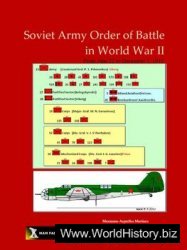Comparing several of the perimortem taphonomic findings at Bolshoi Yakor with another late Pleistocene open site, Ust-Kova, is interesting because of the substantial similarity between the two, except for preservation quality, which is much better at Bolshoi Yakor. Both differ markedly from cave assemblages such as Ust-Kan (Turner et al. 2001b). Ust-Kova is located at the junction of the Angara and Kova rivers. It is described by Derev’anko et al. (1998:122-123, 133-137).
The Ust-Kova sample contained mainly caribou (reindeer) and horse remains. The bone condition was mainly soft and chalky (65.5%), a poor condition six times more common than at Bolshoi Yakor (9.9%). Mean size was about the same in both sites, but Ust-Kova had more whole bones (11.2%). Tooth scratches and dints at Ust-Kova were 4.3% and 5.2%, respectively - values not much different fTom those at Bolshoi Yakor. Polishing was more fTequent at Ust-Kova (33.3%), but pseudo-cuts (Ust-Kova, 1.7%) and stomach acid erosion (Ust-Kova, 0.0%) were very similar in frequency. Stone tool cut marks at Ust-Kova were 14.7%, nearly the same as Bolshoi Yakor (12.2%), as were chop marks. Most of the other taphonomic features were very similar; however, there was no sure sign of burning at Ust-Kova.
The sample of Bolshoi Yakor faunal refuse shows a pattern of perimortem taphonomy that resulted mainly from human butchering, cooking, and breaking the bones of small (hare-sized), medium (fox-sized), and large (deer-sized) animals. The fragmentation was so extensive that most fragments could not be identified as to skeletal element, species, or MNI represented in the sample. However, it is fairly certain that very large animals such as mammoth, rhinoceros, or bison are absent from our sample. The intensive processing by these ancient hunters and their families shows clearly that they were not wasting any of the nutrients available in each slain animal, regardless of its size, age, or species. In addition to the carcass processing by humans, there is good evidence of small carnivores having also chewed on some of the remains. The amount and degree of carnivore damage is felt to have been done by a few small - to medium-sized carnivores such as dogs or foxes. There is no sign of the more severe types of damage caused by hyenas, bears, or wolves in any of the fragments.




 World History
World History









